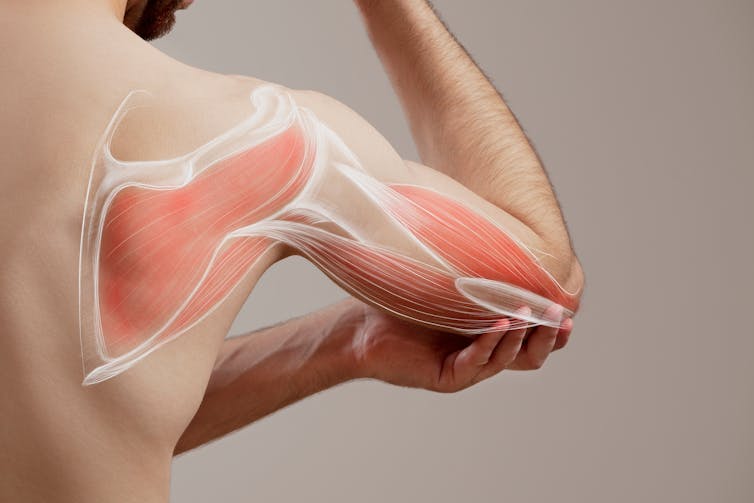Source: The Conversation – (in Spanish) – By Lluc Vidal, Profesor Titular, Director del Grado de Relaciones Internacionales de la UOC, UOC – Universitat Oberta de Catalunya

En las dos últimas décadas, el ascenso de China se ha convertido en uno de los fenómenos más determinantes de un nuevo sistema internacional en ciernes. Bajo el liderazgo de Xi Jinping, el país ha pasado de ser la “fábrica del mundo” a una potencia tecnológica y diplomática que aspira a disputar la hegemonía global a Estados Unidos.
Las reformas económicas de los años ochenta permitieron a China experimentar un crecimiento sin parangón en la historia reciente. Sin embargo, el salto cualitativo ha llegado con el XIV Plan Quinquenal (2021–2025), que ha fijado como objetivo alcanzar la autosuficiencia tecnológica en sectores estratégicos como los semiconductores, la inteligencia artificial y la biotecnología.
Solo en 2024, el país concentró el 47 % de las solicitudes de patentes mundiales, según la Organización Mundial de la Propiedad Intelectual (OMPI), y destinó en 2022 el 2,6 % del PIB a I+D, superando a la media de los países emergentes según los datos del National Bureau of Statistics of China.
Esta política combina una masiva inversión pública, alianzas internacionales de forma selectiva y una diplomacia tecnológica que vincula innovación y acción exterior. En otras palabras, China va a movilizar su capacidad tecnológica (5G, las energías renovables o la inteligencia artificial) como instrumento de poder e influencia internacional.
Prosperidad, cohesión y poder
El proyecto político de Xi Jinping, conocido como el “Sueño Chino” (中国梦, Zhongguo meng), busca restaurar el papel central del país en el mundo. Este sueño combina tres ejes: prosperidad económica, cohesión interna y “renacimiento nacional”. Ahora bien, ¿qué signfica este discurso? En la práctica, implica mantener un fuerte control interno y una expansión exterior controlada donde la diplomacia, la innovación tecnológica y la modernización militar se coordinan para consolidar la influencia global de China.
El gasto en defensa aumentó un 7,2 % en 2024, consolidando a China como la segunda fuerza armada mundial, con un 1.7 % sobre el PIB. Al mismo tiempo, el país está desarrollando capacidades en ciberdefensa, guerra electrónica y drones autónomos. Como sentenciaba Xi en 2017: “En circunstancias de una competencia militar global cada vez más intensa, solo los innovadores ganan”.
La política de la seda
El ascenso chino no puede entenderse sin su dimensión geográfica. A través de la Iniciativa de la Franja y la Ruta (BRI), lanzada en 2013, Pekín ha invertido más de un billón de dólares en infraestructuras que conectan Asia, África y Europa.
Esta red de corredores ferroviarios, puertos y parques industriales no solo busca facilitar el comercio, sino también reforzar la influencia de China. El control de recursos críticos, como el litio, el cobalto o las tierras raras, le otorga un poder geoeconómico considerable. China refina el 60 % del litio mundial y produce más del 70 % de las tierras raras, según la Agencia Internacional de la Energía.
Estos materiales son esenciales para la transición energética y la revolución digital, lo que sitúa a Pekín como socio indispensable. En un contexto de descarbonización acelerada, el control de los minerales críticos no solo condiciona la capacidad industrial de los Estados, sino que reconfigura las estructuras del poder económico y político mundial, un terreno en el que China parte con clara ventaja.
Europa entre la cooperación y la autonomía estratégica
Desde 2019, la UE define a China como socio, competidor y rival sistémico, una triple categoría que refleja una estudiada ambivalencia. Europa necesita a China para avanzar en su transición verde y tecnológica, pero teme depender excesivamente de ella en sectores estratégicos.
El concepto de “de-risking”, impulsado por la Comisión Europea, busca reducir dependencias sin romper los lazos comerciales. Alemania, por ejemplo, mantiene un comercio bilateral con China de más de 250 000 millones de euros anuales, pero restringe inversiones en sectores sensibles como telecomunicaciones o microchips.
Diplomacia tecnológica y narrativa global
¿Como consigue China lograr sus objetivos en materia de política tecnológica? La diplomacia china combina poder duro (hard power), económico y militar, con poder blando (soft power) basado en la proyección cultural, la cooperación educativa y la creación de instituciones internacionales propias, como el Instituto Confucio o el Banco Asiático de Inversión en Infraestructura.
Además, China promueve una narrativa alternativa al orden liberal occidental: un “mundo multipolar” donde los países del Sur Global tienen mayor voz. En 2024, China apoyó en la cumbre del BRICS la incorporación de Irán, Egipto, Etiopia y Emiratos Árabes Unidos, consolidando su papel como articulador de un bloque postoccidental.
Sin embargo, su estrategia exterior también conlleva ciertos riesgos. La creciente deuda de algunos países africanos y asiáticos con bancos chinos y las tensiones en torno a Taiwán o el mar de la China Meridional podrían derivar en crisis de legitimidad o en una respuesta coordinada de otras potencias.
La paradoja del ascenso chino
China aspira a liderar la cuarta revolución industrial y a consolidarse como potencia global sin provocar una ruptura abierta con el orden liberal creado en 1945. Su desafío es controlar sin asfixiar, expandirse sin generar alianzas de contención y mantener la innovación dentro de un sistema político centralizado.
De su capacidad para innovar sin desestabilizar dependerá si el siglo XXI será recordado como el momento en que China desafió el orden liberal… o lo reinventó a su medida.
![]()
Lluc Vidal no recibe salario, ni ejerce labores de consultoría, ni posee acciones, ni recibe financiación de ninguna compañía u organización que pueda obtener beneficio de este artículo, y ha declarado carecer de vínculos relevantes más allá del cargo académico citado.
– ref. El ‘sueño chino’ de Xi Jinping: cómo Pekín aspira a disputar el liderazgo global a Estados Unidos – https://theconversation.com/el-sueno-chino-de-xi-jinping-como-pekin-aspira-a-disputar-el-liderazgo-global-a-estados-unidos-267774









